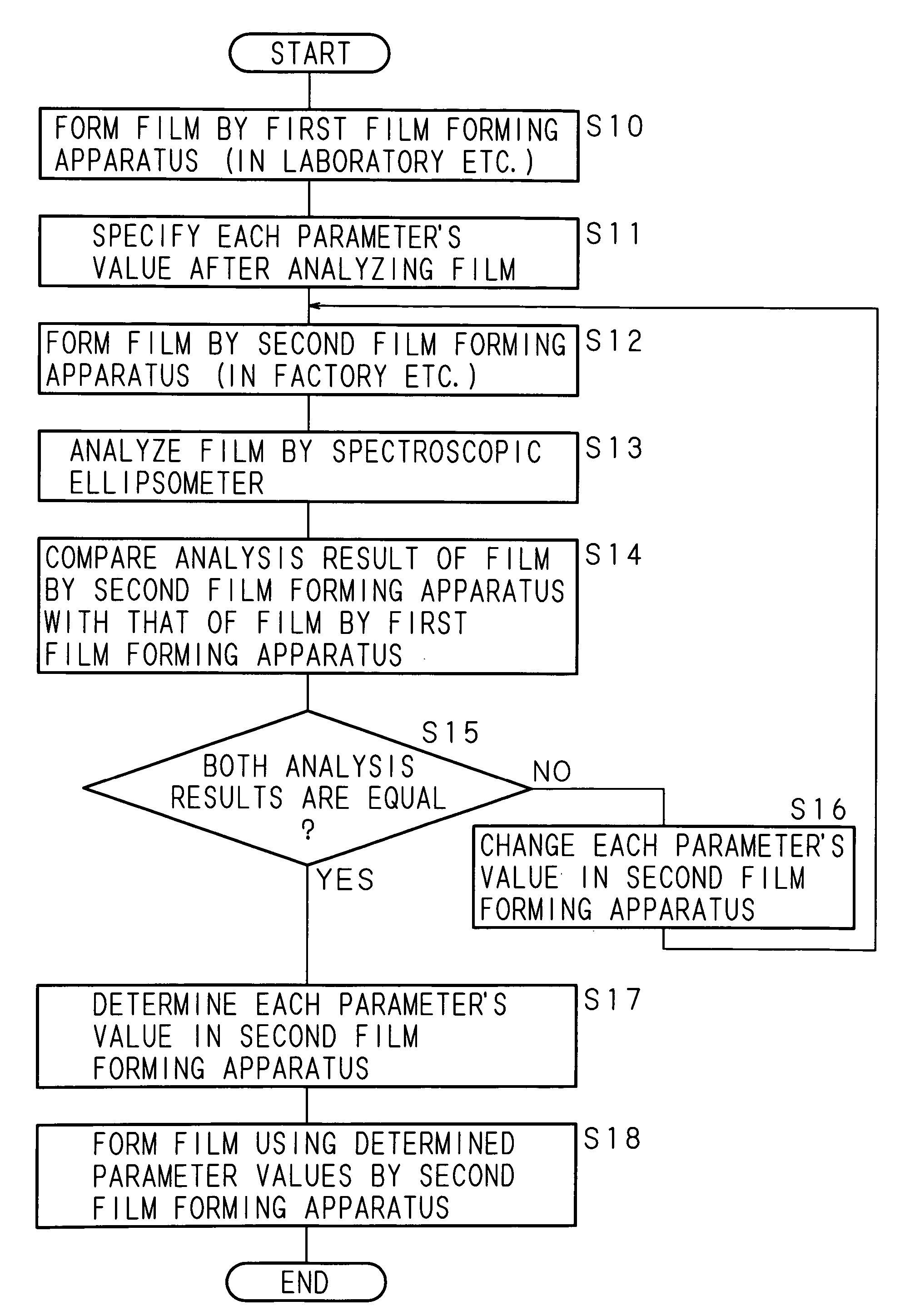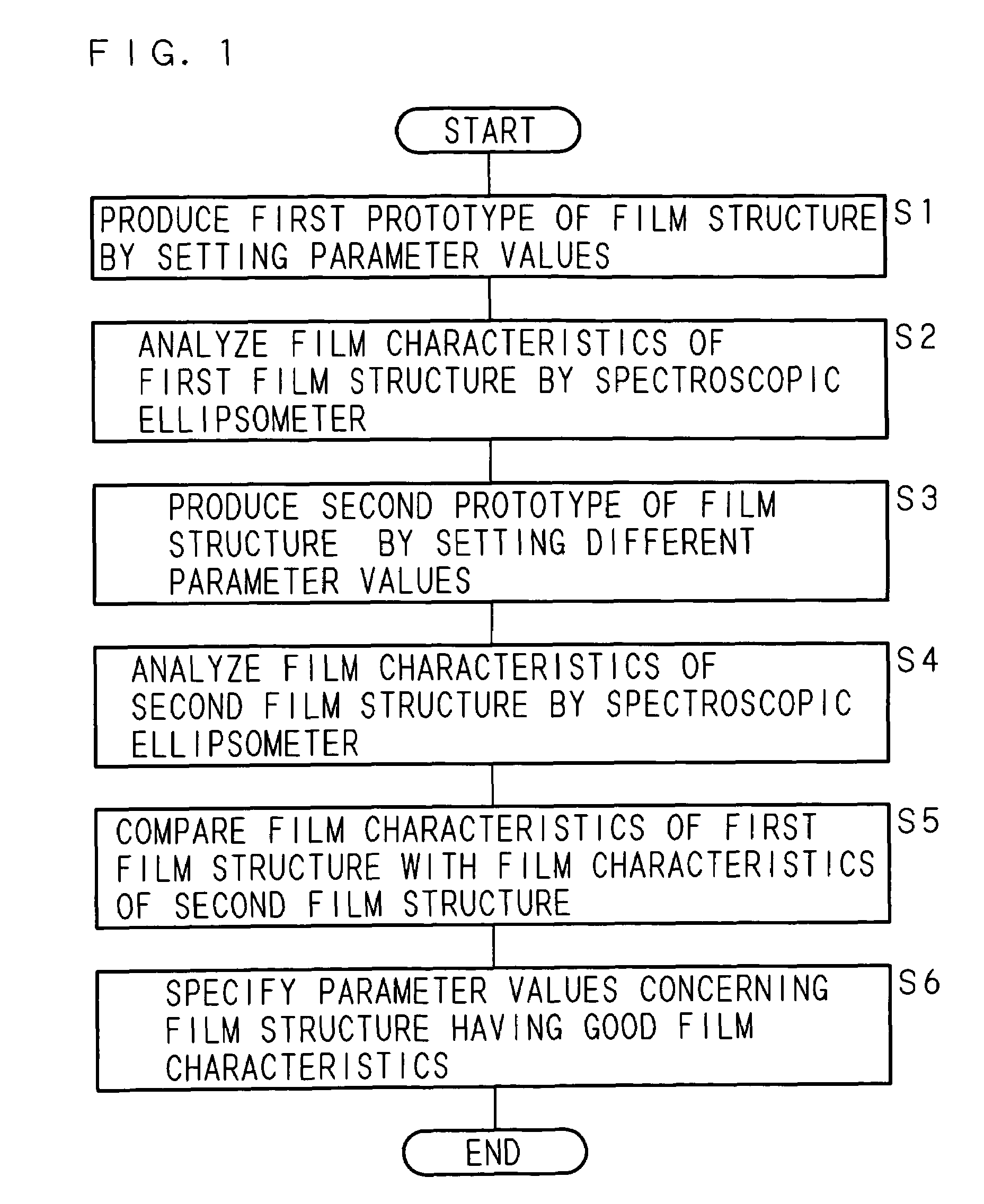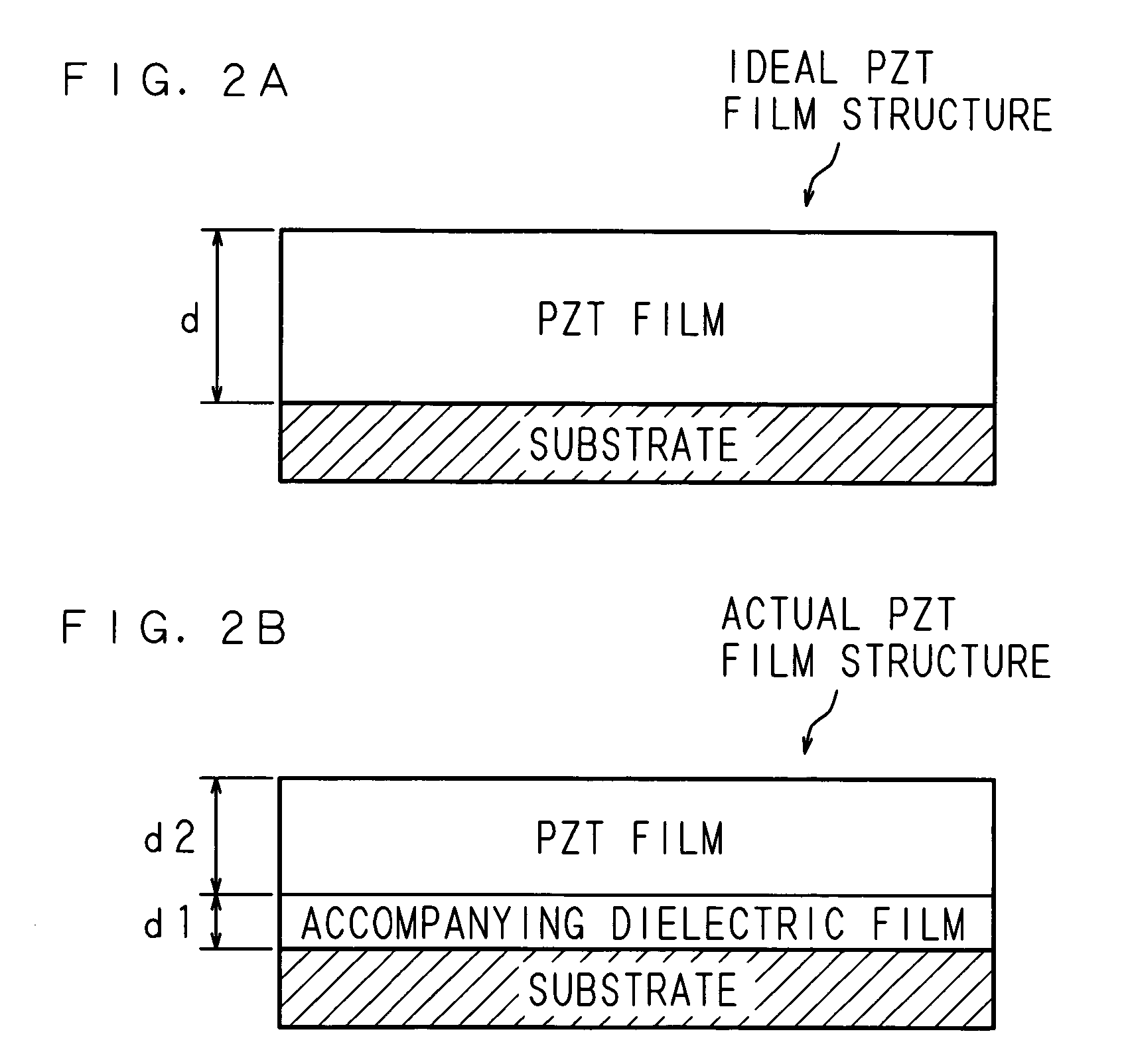Film forming condition determination method, film forming method, and film structure manufacturing method
a technology of condition determination and film, applied in the direction of semiconductor/solid-state device testing/measurement, instruments, nuclear elements, etc., can solve the problems of requiring a lot of time and work, affecting the production efficiency of prototype products, and rarely obtaining prototype products having the same characteristics as prototypes, etc., to reduce the production of mass-production prototypes, reduce labor and burden concerning analysis, and control the generation of accompanying dielectric films more easily
- Summary
- Abstract
- Description
- Claims
- Application Information
AI Technical Summary
Benefits of technology
Problems solved by technology
Method used
Image
Examples
first embodiment
[0072]FIG. 1 is a flowchart showing the processing steps of a film forming condition determination method, according to the present invention. The present invention is a method for determining a film forming condition, in forming a high-dielectric constant film or ferroelectric film as a dielectric film with a dielectric constant of not lower than 50, based on electrical measurement, on a substrate (for example, with a deposited material for electrode), and more particularly for determining a film forming condition, capable of forming a film structure, including an intended high-dielectric constant film or ferroelectric film, by reducing an accompanying dielectric film, that is generated at the interface between the substrate and the high-dielectric constant film or ferroelectric film, with the formation of the high-dielectric constant film or ferroelectric film.
[0073]The first embodiment illustrates, as shown in FIG. 2A, the case where a single PZT (lead zirconate titanate) film, a...
embodiment 1
[0101]For the determination as to whether or not the film structure has good film characteristics, a determination may be made that accompanying dielectric film with a thinner film thickness d1 has good film characteristic, based only on the film thickness d1 as the characteristic of the accompanying dielectric film, or a determination may be made that the PZT film with a thicker film thickness d2 and a film characteristic (such as a dielectric constant) closer to the intended value has good film characteristic, based on the film thickness d2 and the film characteristic as the characteristics of the PZT film. Further, the film forming condition determination method may also be applied to determine a film forming condition of high dielectric or ferroelectric other than PZT, and may also be applied, for example, to form a PLZT film.
[0102]Although the determination of the film forming condition was explained with the respect to the accompanying dielectric film, generated at the interf...
second embodiment
[0113]If a film forming apparatus, for use in the mass-production stage, is a MOCVD apparatus, for example, its basic structure is the same, as the one shown in FIG. 3, but it is capable of accepting a plurality of substrates S on the mount base 6, so that a plurality of film structures can be formed by one film forming processing. Therefore, since the film forming apparatus for mass-production differs in the scale from the film forming apparatus used in the prototype production stage, an adjustment is made, using the film forming method of the present invention to match the film forming condition determined at the prototype production stage with the mass-production stage. Note that the film forming method of the second embodiment is applicable to both the film formation of a high dialectic film or ferroelectric film, such as PZT, whose dielectric constant based on electrical measurement is not lower than 50, and the film formation of a dielectric film, with a dielectric constant lo...
PUM
| Property | Measurement | Unit |
|---|---|---|
| dielectric constant | aaaaa | aaaaa |
| thickness d1 | aaaaa | aaaaa |
| thickness d1 | aaaaa | aaaaa |
Abstract
Description
Claims
Application Information
 Login to View More
Login to View More - R&D
- Intellectual Property
- Life Sciences
- Materials
- Tech Scout
- Unparalleled Data Quality
- Higher Quality Content
- 60% Fewer Hallucinations
Browse by: Latest US Patents, China's latest patents, Technical Efficacy Thesaurus, Application Domain, Technology Topic, Popular Technical Reports.
© 2025 PatSnap. All rights reserved.Legal|Privacy policy|Modern Slavery Act Transparency Statement|Sitemap|About US| Contact US: help@patsnap.com



